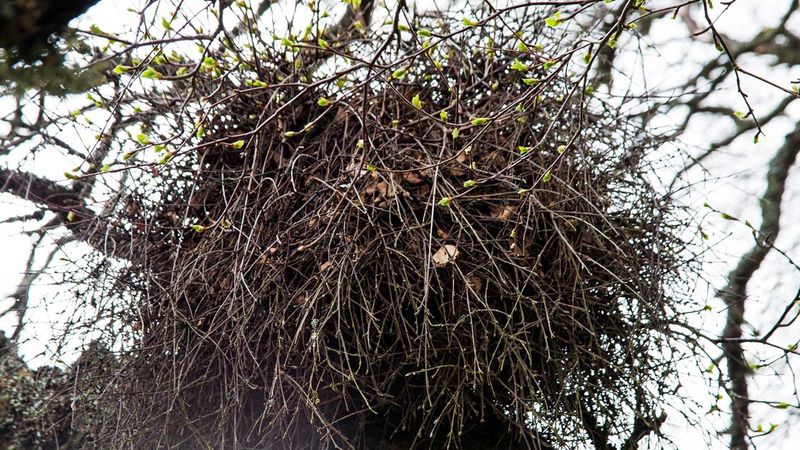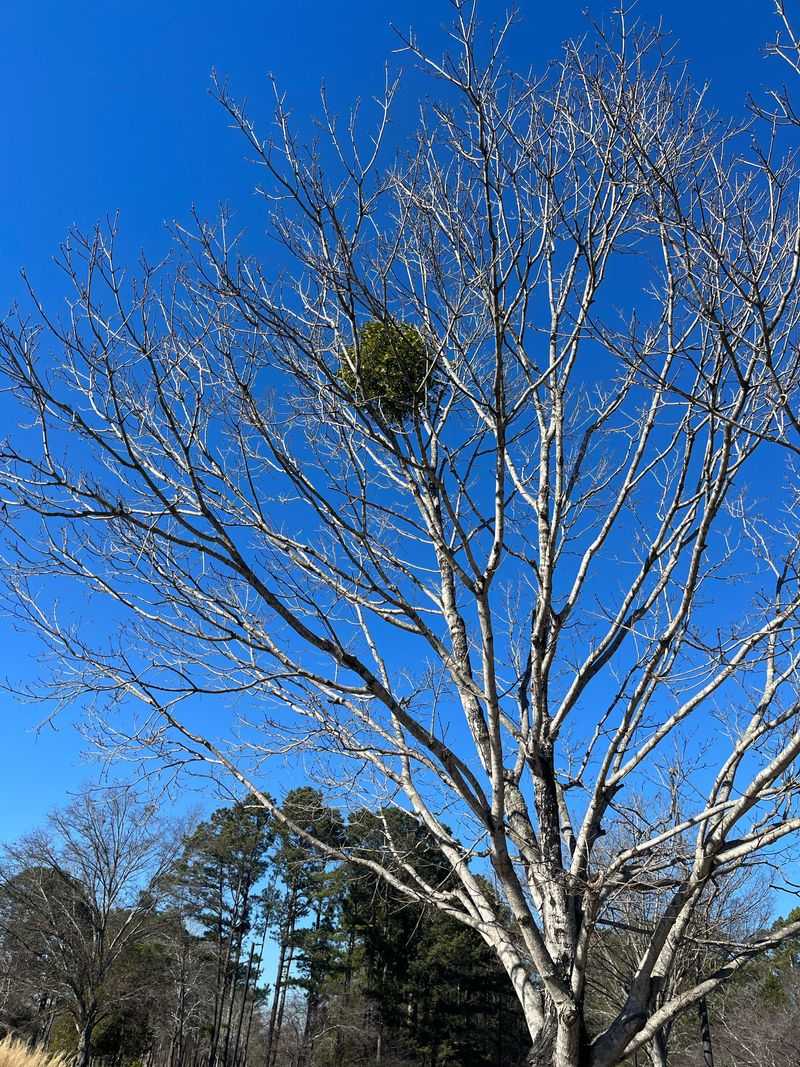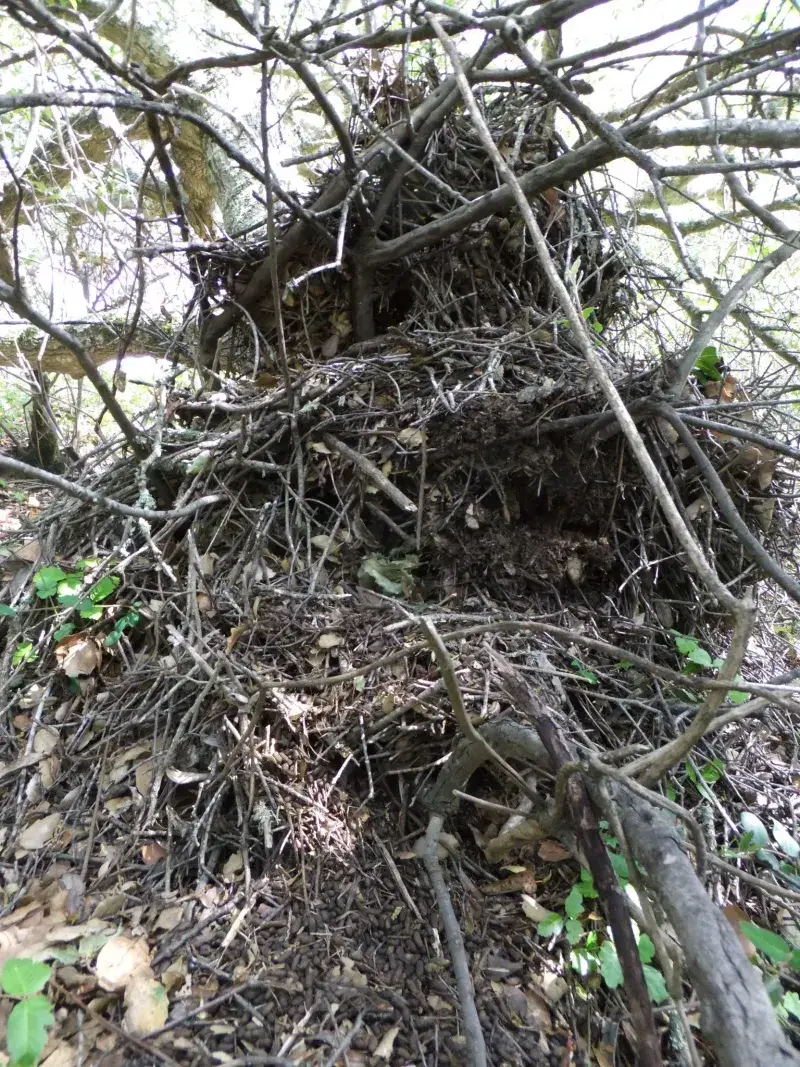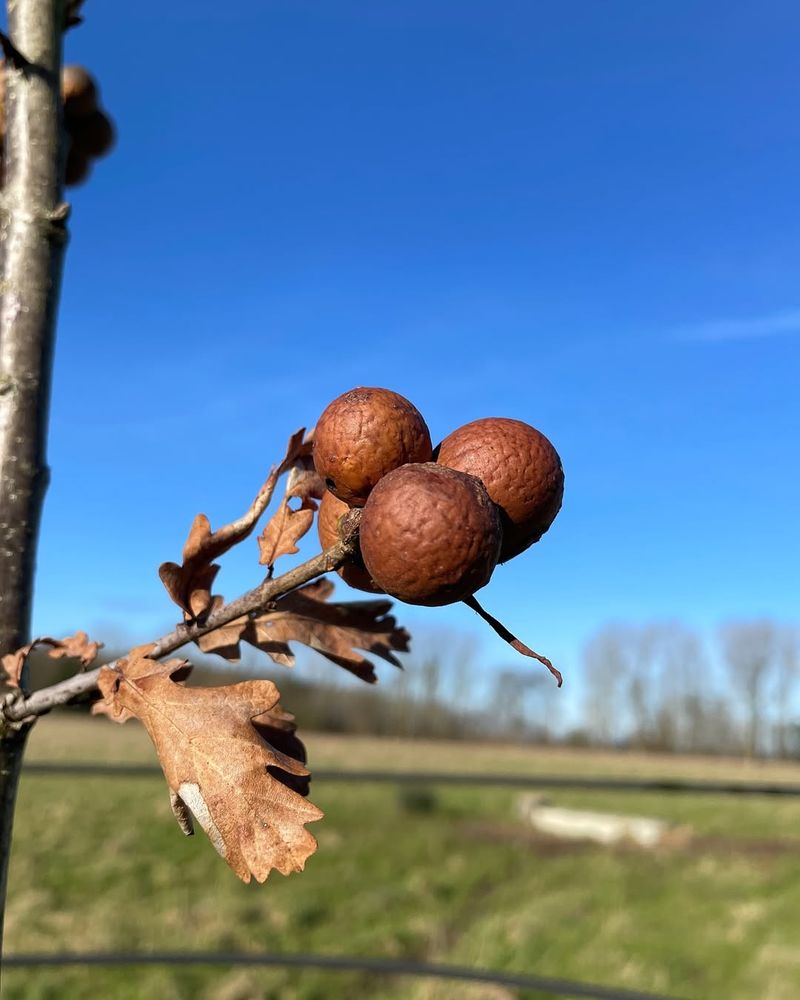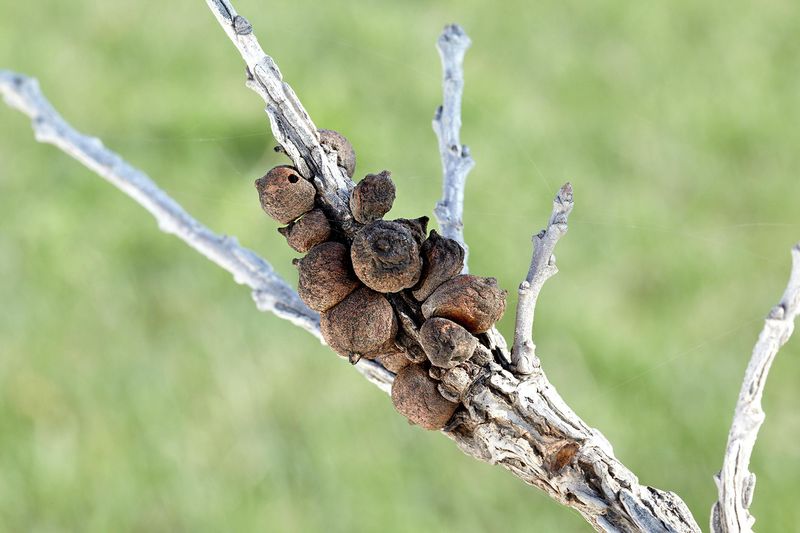You’re standing in your Arizona yard, gazing up at your tree, and spot what looks like a bird nest tucked among the branches. Before you start worrying about disturbing wildlife, take a closer look.
Many times, what appears to be a cozy nest is actually something completely different—often just a natural cluster of leaves or plant material. Understanding what you’re really seeing helps you care for your trees better and avoid unnecessary concern.
1. Witches’ Broom Growth Pattern
Trees sometimes develop unusual growth patterns called witches’ brooms, where branches grow in tight, tangled clusters that mimic nest shapes.
These odd formations happen when fungi, insects, or even genetic mutations cause the tree to produce excessive branching in one spot. Arizona’s desert climate can stress trees, making them more susceptible to these abnormal growths.
The dense tangle of twigs and leaves creates a rounded shape that fools many homeowners into thinking birds have moved in. While they look alarming, witches’ brooms rarely harm the overall health of your tree.
2. Mistletoe Clumps Taking Over
Mistletoe isn’t just for holiday decorations—it’s a parasitic plant that thrives throughout Arizona, creating thick green clumps in tree canopies. This sneaky plant sends roots into tree branches, stealing water and nutrients while forming what looks remarkably like a leafy nest.
Desert mistletoe particularly loves mesquite, palo verde, and ironwood trees common across the state. The rounded clusters grow denser over time, becoming more nest-like as seasons pass.
If left unchecked, mistletoe can weaken your tree significantly, so identifying it early matters for your landscape’s long-term health.
3. Dried Leaf Accumulation In Branch Forks
Wind does funny things in Arizona, especially during monsoon season when gusts push leaves into every available crevice. Branch forks create perfect pockets where dead leaves collect and compact, forming surprisingly nest-shaped bundles that stay put for months.
Cottonwood, ash, and mulberry trees commonly trap these leaf clusters because their branching patterns create natural collection points.
The compressed leaves darken with time and weather, looking even more like woven nesting material from a distance. A gentle poke with a long stick usually reveals the truth—just crumbly leaves, not a bird home.
4. Squirrel Leaf Nests Built For Shelter
Arizona’s rock squirrels and occasional tree squirrels construct leafy shelters called dreys that easily pass for bird nests at first glance.
These clever rodents weave together leaves, twigs, and bark strips to create basketball-sized homes in tree canopies. Unlike bird nests, squirrel dreys are typically larger, rounder, and positioned closer to the trunk for stability.
You might notice the entrance hole on the side, which birds rarely create in their cup-shaped nests. Watching your tree at dawn or dusk often reveals the true residents—furry rather than feathered.
5. Packrat Midden Material Lodged High
Packrats are notorious hoarders throughout Arizona, collecting everything from cactus pads to shiny objects for their elaborate nests. Sometimes their collection efforts result in plant material getting wedged into tree branches, creating messy clusters that resemble nests but lack any organized structure.
These opportunistic rodents often drop or abandon materials while climbing, leaving random accumulations high in the canopy. The jumbled appearance distinguishes packrat debris from the carefully woven construction of actual bird nests.
Look for unusual items mixed in—packrats love adding random treasures to their collections, unlike methodical nest-building birds.
6. Insect Galls Creating Leafy Clumps
Tiny insects like wasps and mites can trick your tree into growing weird leaf clusters that look just like bird nests from far away. When these bugs lay eggs on branches, the tree responds by creating extra tissue around the spot. This growth forms a protective ball of leaves that shelters the developing insects inside.
Arizona’s warm climate makes it a perfect home for gall-forming insects. Palo verde, mesquite, and oak trees commonly develop these strange formations. The clusters usually appear dense and rounded, staying attached even during windy weather.
Most galls won’t seriously harm your tree, though heavy infestations might slow growth. If you’re worried about the health of your tree, a certified arborist can inspect it and recommend treatment options when necessary.
7. Branch Dieback Trapping Dead Foliage
Sometimes a branch sets back from disease, drought stress, or damage, but the leaves don’t fall right away like you’d expect. Instead, they get tangled up in smaller twigs and branch forks, creating a messy clump that catches your eye.
From ground level, this collection of brown, crispy leaves can easily fool you into thinking it’s an old bird nest. Arizona’s intense heat and occasional monsoon winds often cause branch dieback, especially during drought years.
Trees like ash, elm, and mulberry are particularly prone to this issue. The trapped foliage stays put because the leaves dried out before they could form their natural separation layer. Pruning away dead branches helps your tree look healthier and prevents potential hazards from falling limbs during storms.


